Photographs versus Fine Art Photographs
By Bruce Barnbaum–
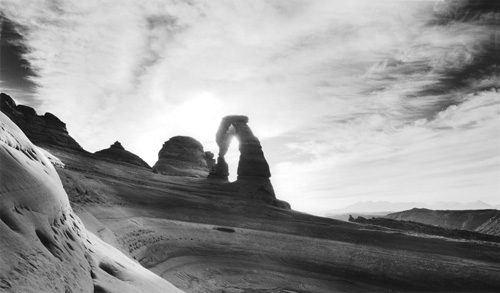
Delicate Arch, Sunrise. © Bruce Barnbaum
Throughout my photographic career, I have been asked, “What is the difference between a fine art photograph and a regular photograph?” This question was asked explicitly at the last workshop I taught before completing the text for The Essence of Photography. It’s an excellent question, one that deserves thought and discussion.
My first answer is, “A lot of it is just pretentious bullshit.” It is pretentious on the part of artists themselves, and the gallery owners, museum curators, and university professors who have a vested interest in saying that their work, the work they show, or the work they judge can be put in one category or another.
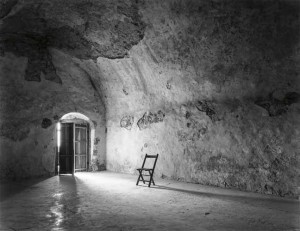
Chair and Shadow, Convento San Miguel, Maní. © Bruce Barnbaum
Let’s face it, if work is shown in a gallery or approved for a thesis, it must be fine art, right? Unstated, of course, is the assumption that work that is not represented in the gallery or shown at the museum or approved for a thesis is not of that caliber, and therefore is just a plain old photograph.
However, to dismiss the question with such a flippant answer would debase the question itself, and would fail to go deeper. So let’s go deeper. If you make a photograph at a family gathering, club party, or on your two-week vacation, and you look at it 20 or 30 years later, it may bring back deep feelings of warmth and remembrance.
But if you show that photograph to almost anyone who is not part of the family or club, or who wasn’t on that vacation with you, it means nothing. It’s a group of people smiling or clowning around for the camera, or some building or mountain or animal that attracted you along the way, but it elicits nothing in the viewer. Such photographs comprise the vast majority of all photographs made.
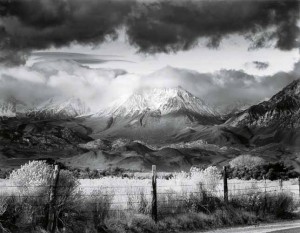
Basin Mountain, Approaching Storm. © Bruce Barnbaum
On the other hand, you can show people a photograph by Paul Strand, Sebastião Salgado, Nick Brandt, or Brett Weston and they can be deeply touched, even though they weren’t there when the photograph was made, and they had nothing to do with the event or location or any other aspect of the image. These are photographs that reach a larger audience.
They say something, much as a Bach toccata says something and has done so for 300 years. This type of photograph is clearly a different entity from the group snapshot or vacation picture. Both are photographs because both were made via the photographic process, but everyone recognizes that there is a distinct difference between the two.
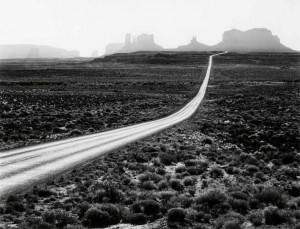
Road To Monument Valley. © Bruce Barnbaum
The problem is that trying to make a sharp-line demarcation between what is a fine art photograph and what is a regular photograph is useless because there is no sharp line. Instead, there’s a fuzzy gray area where one slowly merges into another. Within that gray area there can be a lot of controversy over the category in which any image belongs. Those arguments will never be settled.
I think it can be said that if a photograph is well composed (i.e., with interesting internal relationships), well lit (i.e., with appropriate or extraordinary lighting), well executed (i.e., sharp where sharpness is desirable, unsharp where unsharpness is acceptable or necessary, and appropriately exposed and printed), and it has the capacity to reach a wider audience, it can be considered a fine art photograph.
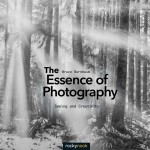
Bruce Barnbaum’s article is an excerpt from his new book, The Essence of Photography, Seeing and Creativity, published by rockynook, $39.95. Bruce is a master photographer, environmentalist and author who conducts photo workshops. To see more of his stunning work, you are invited to visit his website. Blog readers can get 40% off the price of the ebook version by using the coupon code essence40 here.
To share your thoughts about this article, use the “Submit a Comment” feature below.
Original Publication Date: March 08, 2015
Article Last updated: March 08, 2015
Comments are closed.
Categories
About Photographers
Announcements
Back to Basics
Books and Videos
Cards and Calendars
Commentary
Contests
Displaying Images
Editing for Print
Events
Favorite Photo Locations
Featured Software
Free Stuff
Handy Hardware
How-To-Do-It
Imaging
Inks and Papers
Marketing Images
Monitors
Odds and Ends
Photo Gear and Services
Photo History
Photography
Printer Reviews
Printing
Printing Project Ideas
Red River Paper
Red River Paper Pro
RRP Newsletters
RRP Products
Scanners and Scanning
Success on Paper
Techniques
Techniques
Tips and Tricks
Webinars
Words from the Web
Workshops and Exhibits
all
Archives
March, 2024
February, 2024
January, 2024
December, 2023
November, 2023
October, 2023
September, 2023
August, 2023
May, 2023
more archive dates
archive article list







